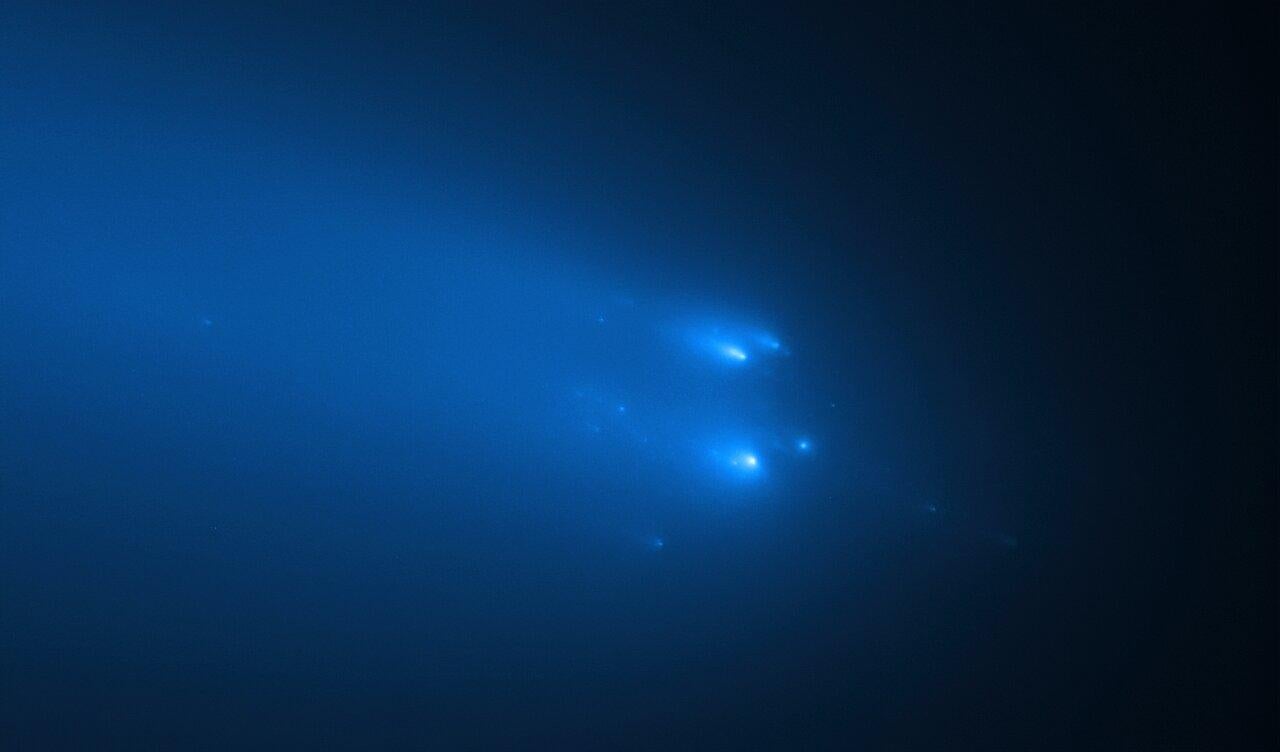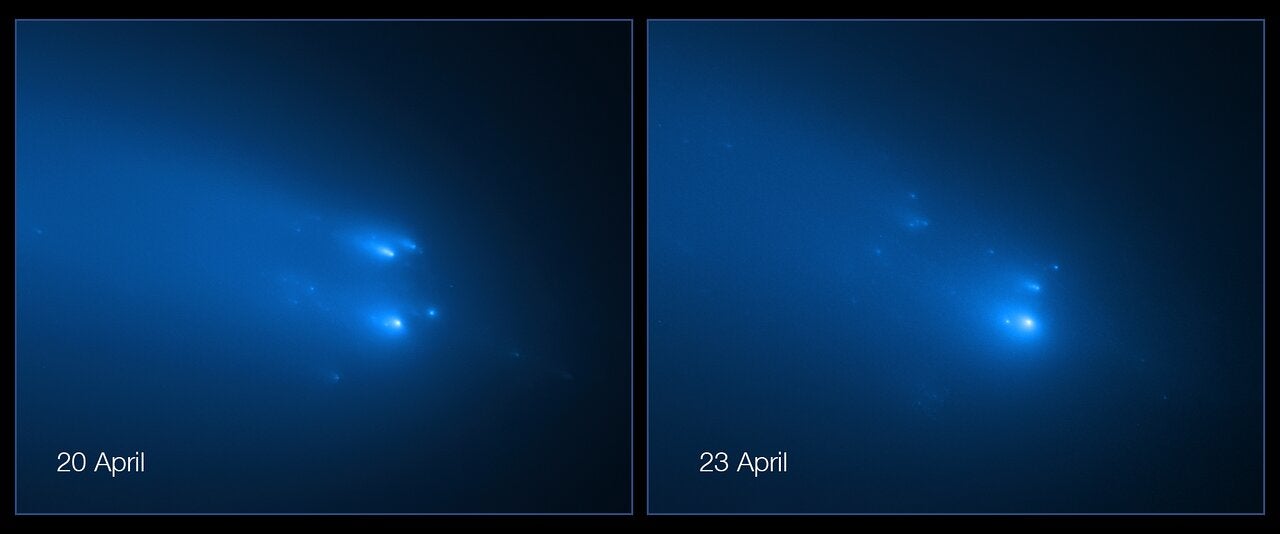Comet Atlas: Nasa shares new images of 'doomed' space object as it breaks into pieces

Nasa and the European Space Agency have shared new images of Comet Atlas as it flies towards Earth.
The space object had provoked excitement in recent months, as it became brighter and brighter. Astronomers suggested it could be one of the brightest comets to fly past Earth in decades, promising a display visible with the naked eye.
But soon after that, the comet got suddenly dimmer, leading to fears that it was in fact breaking apart. Images of the comet seemed to confirm that, with amateur astronomers sharing images that showed the object breaking into pieces.
The latest images were taken days ago by the Hubble Space Telescope, and show that the object has definitively broken up. In lieu of the spectacle in the sky that was expected in May, however, they also show the bright show the comet is putting on as it breaks up.
“This is really exciting — both because such events are super cool to watch and because they do not happen very often. Most comets that fragment are too dim to see. Events at such scale only happen once or twice a decade," said the leader of the one of the Hubble teams responsible for the images, Quanzhi Ye, of the University of Maryland.

Some of the pieces that can be seen in the image are as small as the size of a house. The whole object is thought to have been roughly the size of a football field.
The Hubble team shared two images of the comet, taken days apart. They appear notably different – and astronomers are not quite sure where those differences come from.
“Their appearance changes substantially between the two days, so much so that it's quite difficult to connect the dots,” said David Jewitt of UCLA, leader of the other Hubble team. “I don’t know whether this is because the individual pieces are flashing on and off as they reflect sunlight, acting like twinkling lights on a Christmas tree, or because different fragments appear on different days.”
Comet fragmentations are difficult to predict, and tend to happen very quickly, making it hard for astronomers to watch them as they take place. That also means that the science around such break-ups is limited, and it is hard to know why Atlas fragmented.
Scientists hope that the images from Hubble and other observations could provide extra information about how the phenomenon happens. Astronomers suspect it might be the result of gas coming from ice inside of the comet, which spins the rock into pieces as it is thrown out.
The comet is for the moment inside the orbit of Mars, about 150 million kilometres from Earth. It will come at its closest point to Earth on 23 May, when it will get as near as 115 million kilometres to us, before shooting off towards the Sun.
Join our commenting forum
Join thought-provoking conversations, follow other Independent readers and see their replies
Comments
Bookmark popover
Removed from bookmarks